Our whole process over the last few years started with the simple idea that everyone needs to stretch themselves to do as much as they can for the future. We believe it is as simple as that. Over-compensate for the sleepwalkers. There’s no point at the moment to step back, look at our work, think that’s great and relax. We really need to keep challenging ourselves to see what else we all can do to add to our system.
Initially we started working in our old small garden with syntropic agriculture where we were based in a wide valley, with full daylight sun on the whole garden. The idea was to start composting the dog poo as a starting point using two small containers, mixing it with sawdust, leaves, twigs and grass cuttings. It would then be stored for a year before being mixed in with the regular compost for the fruit trees. This was one of those starts to get going, to do something and avoid over-thinking, procrastination and dithering, but also with the idea that there needed to be some serious learning done before too much momentum was gathered, and that starting this project would encourage that to happen.
This started fairly well, the studying went well during which time Dave Darby’s Compost Toilets became preferred bed time reading, and I came across the Low Impact Site with its wealth of useful information. During this time we ended up moving from our 1000 square metre lot in a river valley to a 100,000 square metre “sitio” or small holding on the edge of the town Engenheiro Paulo de Frontin in the state of Rio de Janeiro, 600 metres above sea level and about 70 kms inland, north from the coast. It was now time to scale up. Most of the land is secondary Atlantic Rain Forest, grown back on what was an old coffee plantation many years ago. Its east facing aspect does cause issues for growing, we lose direct sunlight by about 2pm almost all year round, but we adapt to work with this and don’t let that take our focus off other things that can be done too.
We let out the main house on the property for families to get together, for events and parties, celebrations or just an escape from the busy city life of Rio de Janeiro.
I had thought about a compost toilet before but we were never in the correct location to invest in building one and I realised this was now an ideal opportunity to look into the way human waste was used on the land. The three old septic tanks were incredibly over grown, in one of the bathrooms of the main house I was fairly sure the roots which had grown up through the old pottery pipes had grown hands allowing them to “un-flush stools” at the most inappropriate times. A fair bit of digging was required to set up a TEVAP (Fossa Ecologica or Tanque de Trans Evaporation in Portuguese, equivalent to a Watson Wick) for the main house where we separate out only what is flushed from the toilets. This idea came to us via some neighbours who have done the same thing on their land to provide something which returns nutrition to plants slowly rather than just storing it in a septic tank planting bananas for fruit and Taro (or Taioba in Portuguese) for foliage consumption. Yams are also planted but simply because of the large foliage for the transpiration, the vegetables are not dug up and eaten. With a large house for renting with several ensuites already existing this was not an appropriate place to start with a compost toilet. So having dug a TEVAP big enough to bury ourselves in, we decided it was also good to do a second one for the two top two cottages higher up on the land, this decision being driven more by conversation with our ‘caseiro’ or groundsman who lived in one house, and my mother-in-law who lived in the other. The idea of moving towards using a compost toilet and humanure was far too big a step for them to comprehend or take.
It took three of us a week to plan, dig and install the main parts of the TEVAP, including sourcing and gathering the old material (concrete slabs, building rubble, chipped stone, sand and decent topsoil and compost) and perhaps another two weeks work around the house digging up, exposing and clearing out the old sewage pipes, replacing old clay pipes where needed with new plastic ones and separating off all the shower and sink water to grey water treatment away from the flush toilets which then went straight into the TEVAP. The grey water treatment also took about another week to do. The system had now been running well for four years and there have been no problems at all.
TEVAP Construction Process

A hole 1.5 metres wide and 1.7 metres deep was dug out by hand, 7 metres long (1.5 metres long per family of 4) and can be lined with plastic, concrete, or in our case old concrete slabs we were removing, meaning ours isn’t fully impermeable, but the clay soil around was compacted first. A tube is created using old tyres with inlet at one end and closed at the far end. The structure of the tube is secured by surrounding them with rubble and then this is covered in 20cm of chipped stone. The chipped stone then has 20cm of sand put on top followed by top soil and finally mulch. One inspection pipe goes into the rubble, another into the tyres just to be sure there are no issues. An overflow is provided off to a banana and papaya circle should the system overflow in the rainy summer season, which hasn’t happened in four years. Bananas were planted, along with taro, yams and pumpkin seeds were also put in and encouraged to spread out, only harvesting outside the area fenced with bamboo. The bamboo is to encourage the chickens not to enter. The soil surface is considered no dig and is regularly topped up with mulch.

The cottage where my wife and I live at the lower end of the area has two bathrooms feeding into the last of the old septic tanks, as well as male and female toilets beside the events room. While the desire was there it wasn’t practical to convert these to compost toilets for various motives
There are plans to use the events room a lot more for local community occasions, for weddings, meals, etc for whatever people would like to hire the place for. With this in mind I decided this was a good opportunity to put a compost toilet in the area with the hope to get more contributions from visitors as well as educate. After casting around for the best location where we had to take into account existing infrastructure, water supply for the sink, layout to allow a raised toilet seat and making sure it was close to where people would use it, it was decided that the best location was by the chicken run about 10 metres from the events area. The only concern was the proximity to the small lake, although admittedly this is no closer than the old existing septic tank.
My wife decided that if it was to be built there, it would have to fit in with the other buildings, be of high standard and be attractive and fit in to support the rest of the business in that area. That’s what you get for marrying an architect, not that I disagreed with any of the key points, but appreciated that all of them increased the price. I realised that to try and encourage others to understand and use it would need to attain all those points as well as be easy to clean, maintain and use. I appreciated that if we were going to try and use it as an example and an education to encourage others to consider the idea then it would obviously have to be well built, have a good life and have space on the walls for good documentation. The plan is to have the documentation in both English and Portuguese, but also find and print other photos of compost toilets in various places as inspiration.
Our builders were excellent in helping with ideas in putting this all together, and we came up with a design allowing us to incorporate some of the many glass bottles left lying around as windows, old timber for the roof, and integrate the wheelie bin storage area underneath with the ground layout, reducing the amount of excavation required.
Due to the proximity to where the water flows down from our spring and through the lake to further downhill it was decided to make the structure fairly sturdy. Locally you wouldn’t build with wood due to the termites / humidity. Most structures are built using concrete and brick. So reinforced concrete was used for the main structure to ensure that it remains sturdy and solid for a long time without the risk of cracks or fissures allowing waste material to escape. The urine separator was set to feed into the septic tank, taking away the urine as well as the water used to flush through from the sink. The taps mounted at the bottom of the wheelie bins also feed into the same pipe further downstream. An additional safety measure for disposal was put in to the design creating a channel around the base where the wheelie bins are mounted so that up to 5 litres of spillage would be captured before leaks and even if it evaporated it would be clear on inspection that it had happened. I would fully expect the first point to see a serious leak would be where the white painted plywood panel would show staining / swelling / fungal growth.
All wood and concrete structures under the toilet seat were painted with a black mastic paint both for protection as well as light damping, and the wood pieces were sealed with expandable foam to reduce the possibility of small air gaps for boring insects and termites to work their way in and cause damage. A large plastic pail with the bottom cut out of it was used to help ‘direct’ deposits into the wheelie bin and make any cleaning that could be required easier.
The toilet seat itself was a gift from our neighbours Fernando and Christina, who had a spare. The new modern light plastic ones don’t really have the weight to keep a good airtight seal, but this old style Bakelite seat was perfect, once lined with some thick rubber gasket material to fill the air gaps. Thank you very much, Christina and Fernando!!
The main complication with putting together the business end of the unit was how to get the urine separator in exactly the right height and distance forward, appreciating that we come in so many shapes and sizes. It took a bit of fiddling and a few amusing experiments on wooden frames and seats figuring out exactly where the jet of pee went. I felt a little jealous of the guys who put the flies on the urinals in the Amsterdam airport urinals who probably had the resources available to experiment with robots and water. This was also followed with a few experiments of how to use the waste from the sink after hand washing to rinse the urinal round afterwards before deciding exactly how to let the water run out. I had originally thought of running the pipe across the width of the urine diverter, capping it and drilling regular holes in it. However, after a few attempts with the tap running the water through all the tubes it seemed to get a good enough swirling action by just leaving the pipe open on one side. I had been a bit concerned that pieces of soap and people washing sawdust covered hands could end up blocking the holes making it hard to clean.
Care was taken with the lighting in the toilet to try and get bright light from up high above the sink but nothing shining directly down into the wheelie bin. I also put low level LED strip lights at knee level to help with that.
Another thing I have to concern myself with is the way wood rots very quickly in brasil, so the plywood panel that was well painted to cover over the base entrance will have a limited life. I also found that after only a year I can also see that the plastic used for the wheelie bins is not of the best quality, already they have dis-coloured considerably in the shade and the supports for the lids had gone brittle. This was quite disappointing, but then I did buy at the cheaper end of the market.
The hardwood parquet flooring used for the structure was recovered from a nearby site that was falling apart and this has given the place a really good finish after sanding and varnishing. A tiled base and skirting also make it easy to keep clean with its weekly sweep and wash down. The walls were skimmed, just roughly and painted white. This was a cost thing after the large investment in the whole structure, but it does make it harder to keep clean. The door was reclaimed from one of the buildings here and is pretty sturdy, with holes cut in for low level ventilation and netting put on the back to keep insects out.
The roof was made using a few spare panels left over of Onduline Fibre Asphalt roofing panels and the gaps around the edges were filled with rolls of chicken wire to prevent lizards and small birds working their way in.
The main thing I’ve not had much luck with at all was the fly trap, it just doesn’t seem to work, but I think it’s more down to the way the light works in the place plus the additional poo directing bucket. It doesn’t seem to have been too much of a big deal, there’s occasionally a handful of tiny flies buzzing around, I didn’t really notice anything else although did raise my eyebrows a bit at a few of the spiders who had nested around the edge of the wheelie bin on the first emptying exercise after it filled up. Maybe the lack of flies explains why they seem so well fed.






After a year of usage and filling up my first wheelie bin, I decided it was time to pay a little back into the system and write about the whole experience with the motives, design and building experience and the operational feedback.
Do I feel the project is worthwhile?
Very much so, it’s an important step in achieving the third rule I’ve seen in Permaculture studies, of returning excess to the land. While the previous deposits into the fifty-year old septic tanks were returning to the land simply because the roots had perforated the brick walls, it is now being returned in a controlled manner. My own personal learning from this project is very positive, I have a far better understanding of the process now and would be very happy to use that information to support others.
Was the project cost effective?
This is an interesting question to break down. It could have been done a lot cheaper in monetary and material costs but this would risk not achieving the full initial objectives.
The idea of not having a good enough finish to risk it not fitting in with the other parts of the business was mitigated by improving the final appearance quality of the final compost toilet. The jury is still out on whether this extra quality finish was required for education. Of those who have used the toilet the majority were fully familiar with the concept and have interest in the environment. Of guests staying in the main house there has been little push so far to encourage them to use it, although a few have expressed interest, but of those few have used. No one has complained about the structure at least.
The risk of being close to the lake was mitigated by ensuring we used proper reinforced concrete around the base and wall corners to ensure any movement of the structure wouldn’t open up any fissures or cracks in the concrete. Using a wheelie bin instead of compost chambers again mitigated the possibility of a leak. All these decisions increased the costs but acceptably.
Will the project pay for itself in compost production? It took me a year to produce the first bin myself. In that time I am happy that everything is functioning as expected. I’m now filling the second bin. Shortly I plan to start ‘encouraging’ our employees, our neighbours and their employees to start using it regularly. If I can increase use to produce four full bins a year I will be satisfied with the production. As for my wife, she is still too scared to sit down on top of a black hole, but promises she will overcome her irrational fear this year. Fingers crossed!
Has the project achieved its remit?
My remit for the project was to satisfy my wife’s requirements that it wouldn’t negatively affect her side of the business, to ensure I created no pollution, dirtied no clean water needlessly and also created compost, to educate others and also to encourage them to do the same thing.
Those first four have been achieved successfully, and I am happy with that.
The educational side really had to be left for this first year until I had a full understanding myself of how it fully operates. It is going to be addressed as well by talking to some of the local schools for school trips and also the local agricultural groups. This will occur in about six months, as first we have to complete the rebuild of our last cottage; I don’t want to start trying to educate on this while we still have a construction project going on in the background. Hopefully we will also have a bit more to show then too with a small house mostly powered by solar panels and solar water heating.
If I could encourage just one person to build on this example I would be over the moon. It hasn’t happened yet though.
What would I do different next time?
For this build I would have chamfered the exit for the wheelie bins to make them easier to manoeuvre in and out, especially when full. I would also extend out the roof at the front a little further to make it easier to shake off and enter on a rainy day.
For the next one I would like to build a simple straw bale compost toilet next with a soak away for urine to keep it as low an environmental impact as possible.
If you are in the area, about 2 hours outside Rio de Janeiro, we are very happy to show visitors around. More information and contact can be made with Dave at [email protected] and Simone has taken quite a few photos of our little paradise at https://www.instagram.com/terradesancler. Contact can either be in English or Portuguese.

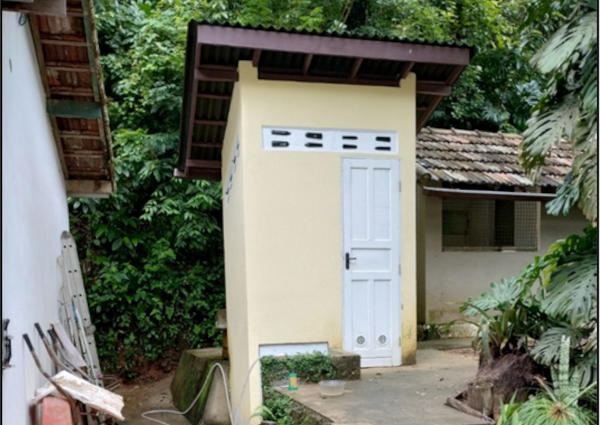
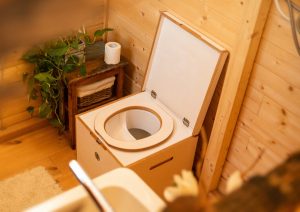
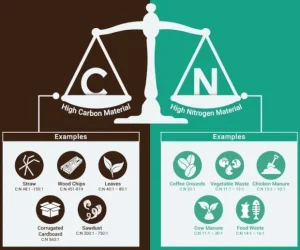
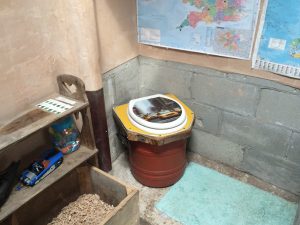
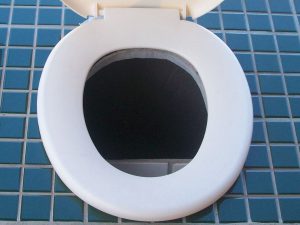
1 Comment
If you are in the area, about 2 hours outside Rio de Janeiro, we are very happy to show visitors around. More information and contact can be made with me at [email protected] and my wife, Simone has taken quite a few photos of our little paradise at https://www.instagram.com/terradesancler. Contact can either be in English or Portuguese.